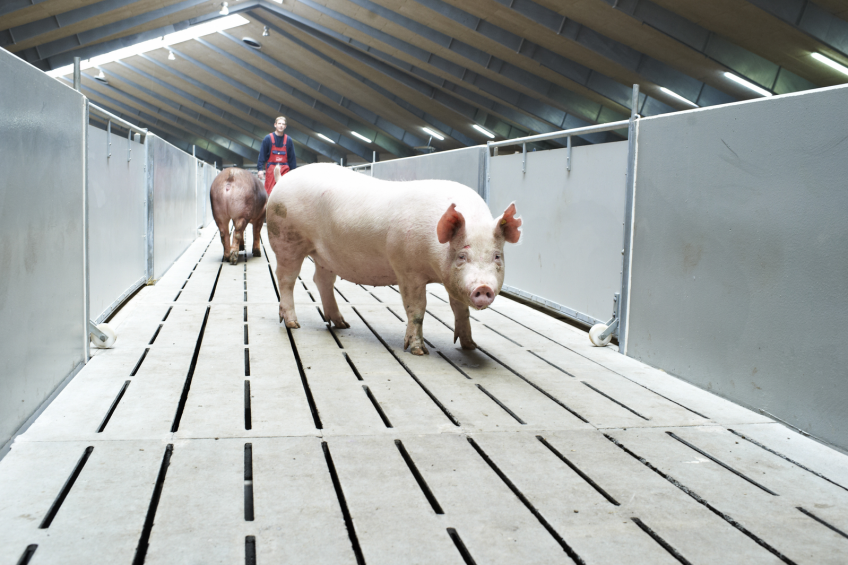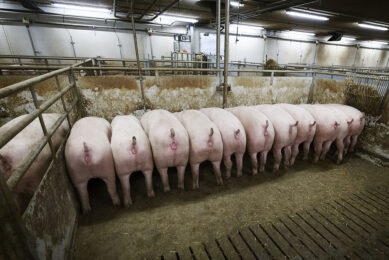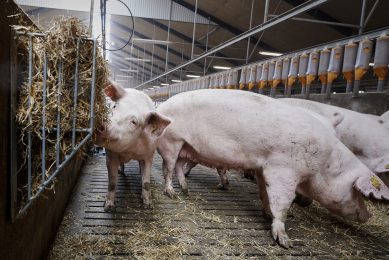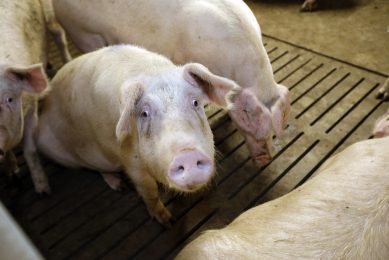High health gilts in practice

High health gilts are known for good productivity performance – delivering large and robust litters and securing an efficient growth rate. Proper gilt management and securing an even gilt flow ready for mating are keys to success.
By Gunner Sørensen, senior project manager and Trine Vig Tamstorf, product manager; Danish Pig Research Centre
High health control, high level of management and systematic recording are the essential tools to obtain a successful mating strategy, when introducing new gilts into any sow herd.
High health level
The health status of your herd plays an important role for how well the genetic potential of the animal can be exploited – this applies primarily to daily weight gain, feed conversion and longevity. Health status is therefore very important. For that reason, in the Danish breeding system DanAvl, all Danish multiplier herds have a documented health status declared in the SPF-SUS system, offering the best possible tool to match the health status of your own herd.*
In order to secure a good health status when introducing new gilts, the following is advised:
- Buy gilts with the same health status – not more or less than that of the sows in the receiving herd;
- New gilts should be placed in a quarantine facility to check them for diseases that are not present in the sow herd;
- The quarantine facility must be isolated from the sow herd and there must be no contact with the sow herd or staff from the sow herd. The quarantine facility must have a separate ventilation, feeding and manure system;
- The quarantine facility must be run as all-in/all-out production. Clean and disinfect the facility between each batch of gilts;
- There must be a gilt immunisation strategy against diseases present in the sow herd – for example by vaccination;
- Gilts should normally be in quarantine for eight weeks. When using a live PRRS-vaccine, the quarantine period is extended to 12 weeks. The new gilts can be introduced to diseases in the sow herd by mixing the animals, but this method is not safe and it is recommended to vaccinate the gilts instead;
- Staff should enter gilt pens daily to make the animals get acquainted to them.
Feeding gilts
When feeding gilts up to mating, it is crucial to ensure that they are uniform in size and back fat, and that they develop good stomach health and strong legs. To secure optimal growth and reproduction for gilts, this feeding strategy should be followed:
- Feed the gilts in a trough or scatter the feed on the floor as this allows all gilts in the pen to eat at the same time in order to secure uniform growth;
- From 60 kg a daily weight gain of 700-900 g is recommended;
- From 90 kg, it may be necessary to feed a diet containing less protein than the lactation diet to increase the back fat at mating;
- If gilts are not uniform in size, the fibre content of the feed can be increased or free access to straw can be given to prolong the feeding time and help make the group of gilts uniform in size;
- A good stomach health is achieved by using home-mixed coarsely ground feed or pelleted feed
- containing 10-20% barley.
Management and heat detection
With a good mating strategy, it is possible to secure an even number of gilts per batch, and thereby an optimal exploitation of the farrowing unit. In order to obtain a successful mating strategy it is important that a systematic, individual recording of age and oestrus is being carried out for all gilts. Bearing in mind that high health gilts usually have their first oestrus at six to seven months of age, this strategy should be followed:
- In order to induce oestrus, it is possible to expose the gilts to a variety of influences, such as moving them, socialising with other gilts and daily boar contact. This must all be initiated at the same time – the majority of gilts will come in the first heat five to ten days later;
- The gilts can be introduced to a boar on a daily basis at the age of six months. The boar must be a minimum of ten months old. Boar and gilts must have contact with each other for 10-15 minutes, once or twice a day. They must have nose contact and preferably be housed in the same pen, but this requires a pen with sufficient space for both;
- Heat detection is carried out by looking for signs in the gilt such as a swollen and red vulva, increased curiosity and possibly mounting other gilts. The ultimate test is to sit on a gilt’s back;
- Record the gilts’ number and age when they come in heat the first time. Complement the registration with the use of colour codes – a different colour for each week;
- Allocate additional feed for at least seven days before mating equal to 3.5 kg/day (flushing);
- Mate the gilts in the second heat at an age of 230-260 days. This gives you one piglet more than mating in the first heat. You will not see any further increases in litter size, if you wait until the third heat;
- Gilts must be mated twice in standing heat: The first time just after heat is detected and then in the morning next day. When inseminating the gilts, care should be given when introducing and placing the catheter. The boar must have nose contact with the gilts at insemination;
- It is vital not to miss a gilt in the first or second heat as by the third heat, visual signs of heat will have weakened;
- If more gilts are ready for mating than can be used, have the youngest gilts in the group wait until the next oestrus three weeks later;
- Expect 99% of gilts introduced in the mating facility to come in heat;
- Cull gilts older than 300 days, with poor constitution and inadequate size in relation to age;
- Gilts must have a minimum of 150 lux at pen level for 16 hours.
The gestation unit
A successful result requires a good strategy for the introduction of the gilts to the pregnancy unit. A gentle introduction to the pregnancy unit is important in order to avoid the gilts being stressed or injured. It is essential for the animals to be allowed to form a ranking order in a quiet and controlled way. The first three days are critical, where extra management is required due to fights taking place in order to establish ranking order.
- The gilts must be part of a stable group of at least ten animals, when introduced to a pregnancy unit with other sows;
- Introduction to pens with other animals must take place on a quiet time of the day, where all animals have been fed. Supply extra feed and straw on the day of introduction;
- If feeding takes place in a long trough or on the floor, the gilts should be housed with other gilts or young sows to secure even feed uptake;
- Gilts must be introduced to the pregnancy unit straight after mating or four weeks after mating;
- Gilts that are to be housed in stable groups with other sows, must be placed in the pen two days before the sows;
- Spend extra time on looking after the animals for the first three days in order to identify animals with special needs.
In short – high health control, a high level of management and systematic recording plays an important role in how well the genetic potential of high health gilts can be exploited. Following these guidelines for introducing new gilts into your herd you will be well on your way to a successful pig production and a solid foundation for the future with high quality pigs.
To see more visit www.spf-sus.dk






